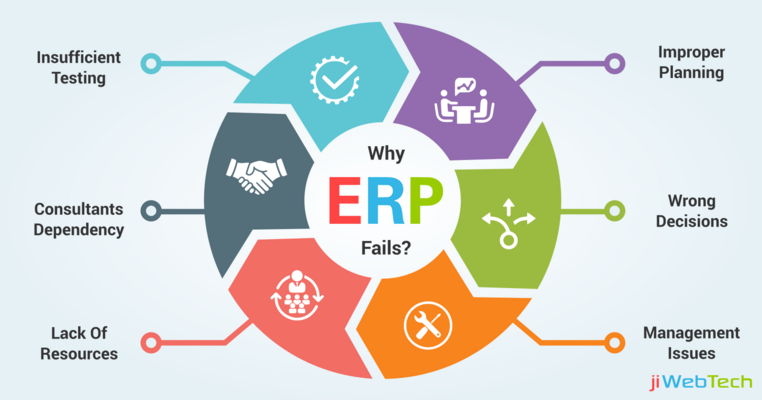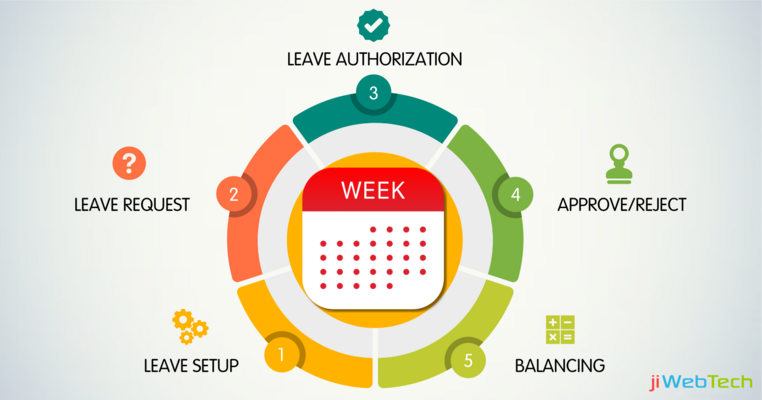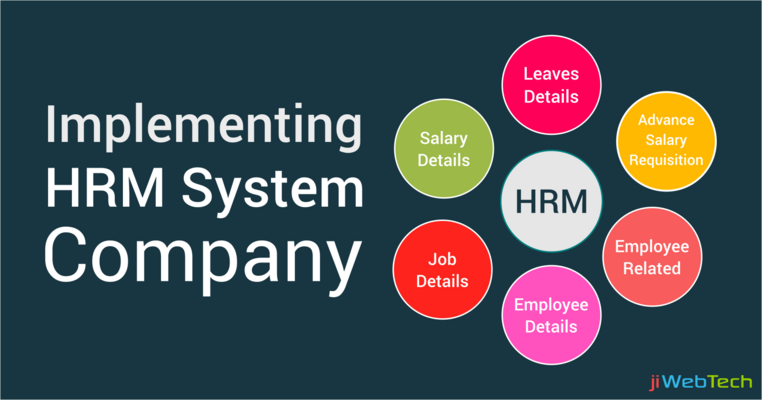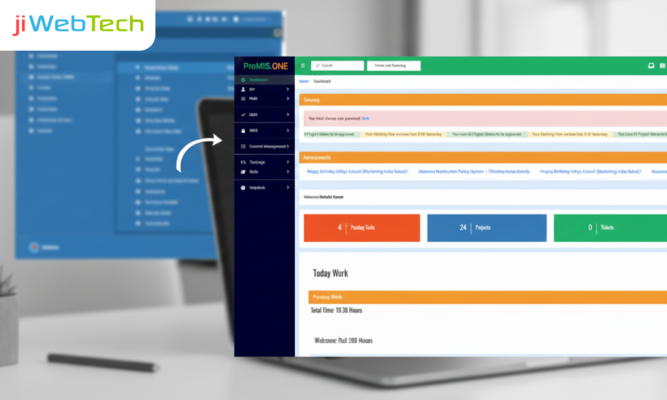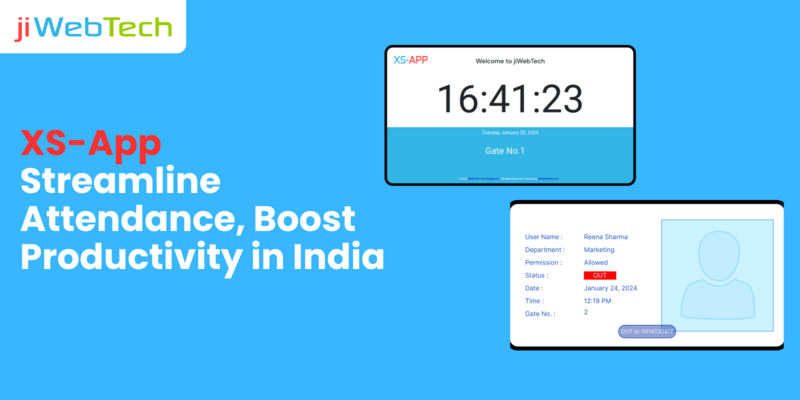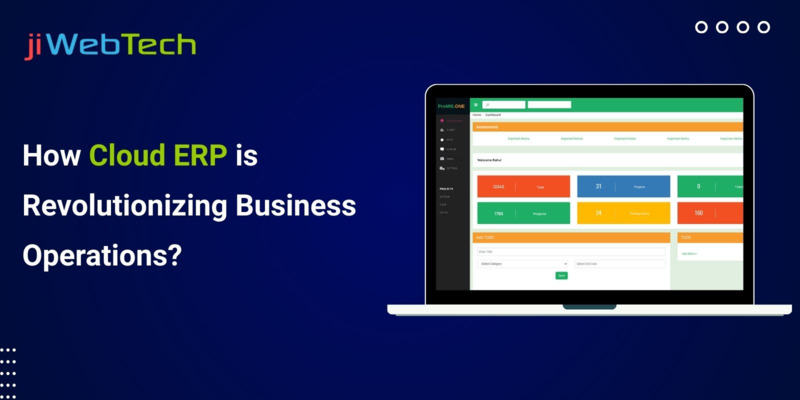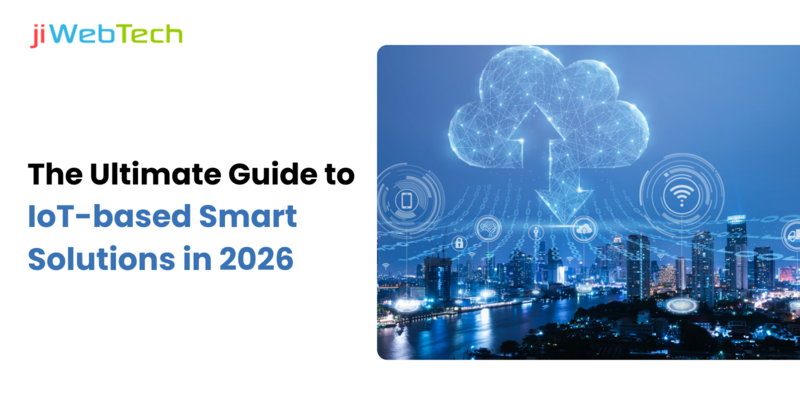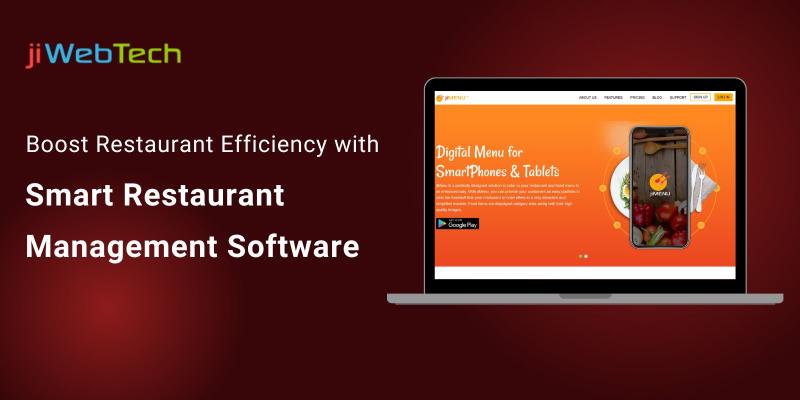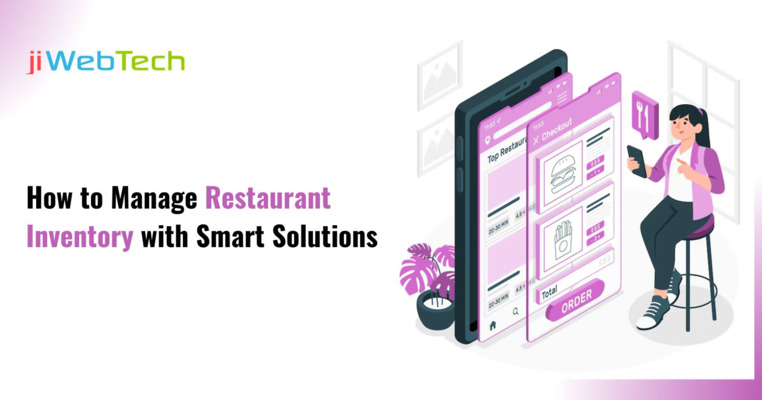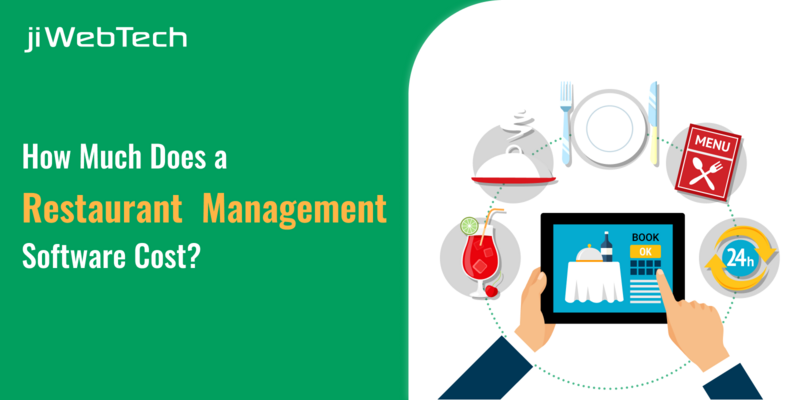- Nov 08, 2024
Share this post on:

The restaurant industry is revolutionizing at a faster rate. With changing market needs, it has become crucial for food establishments to manage inventory and control costs. This is where restaurant software comes into play. Restaurant software is vital to optimizing inventory management and cost control for food establishments.
Furthermore, with the increasing complexity of running a restaurant, it has become essential for owners and managers to leverage technology to streamline operations and maximize profitability.
Ways Restaurant Software Helps Manage Inventory Management
Let us explore the various ways in which restaurant software can help optimize inventory management and cost control.
Accurate Inventory Tracking: One of the primary benefits of using restaurant software is its ability to track inventory levels accurately. Manual inventory management can be time-consuming and prone to errors, leading to overstocking or understocking of ingredients. By implementing a robust restaurant software solution, owners and managers can automate the process of tracking inventory in real-time. This ensures that they always have an accurate picture of stock levels, enabling them to make informed decisions about purchasing and reducing waste.
Streamlined Purchasing Process: Restaurant software help food establishment streamline the purchasing process by automating tasks such as generating purchase orders, sending them to suppliers, and tracking deliveries. With integrated inventory management features, the software can analyze historical data and suggest optimal order quantities based on sales trends and consumption patterns. This helps prevent over or under-ordering, reduce food waste, and minimize carrying costs.
Recipe Management: Another way restaurant software can optimize inventory management is through recipe management functionality. By inputting recipes into the system and specifying ingredient quantities, the software can calculate the exact amount of each ingredient required for a specific dish. This not only helps in accurate inventory planning but also enables chefs to prepare dishes with precision, reducing food waste caused by inaccurate measurements.
Menu Engineering: Restaurant software often includes menu engineering tools that allow owners and managers to analyze the profitability of each menu item. By tracking sales data, ingredient costs, and preparation times, the software can identify high-margin products that contribute significantly to revenue. Conversely, it can highlight low-margin items that may need adjustment or removal from the menu. By optimizing the menu based on data-driven insights, restaurants can increase profitability and reduce waste.
Real-Time Reporting and Analytics: Restaurant software provides real-time reporting and analytics capabilities, allowing owners and managers to gain valuable insights into their operations. They can access detailed reports on inventory levels, sales performance, food costs, and more. These insights enable them to identify areas of inefficiency, such as excessive food waste or overstocking, and take corrective actions promptly. By accessing accurate and up-to-date information, decision-makers can make better data-driven decisions that optimize inventory management and control costs effectively.
Integration with POS Systems: Many restaurant software solutions integrate seamlessly with point-of-sale (POS) systems. This integration enables real-time synchronization of sales data with inventory management, allowing for accurate tracking of ingredient usage. When a dish is sold, the software automatically deducts the corresponding ingredients from the inventory, ensuring accurate stock levels at all times. This integration eliminates the need for manual data entry and reduces the risk of errors in inventory management.
Forecasting and Demand Planning: Advanced restaurant software often includes forecasting and demand planning features. By analyzing historical sales data, seasonal trends, and other factors, the software can predict future demand for ingredients accurately. This helps owners and managers plan inventory levels accordingly, avoiding shortages or excess stock.
Vendor Management: Restaurant software can simplify vendor management by centralizing communication and documentation. It allows owners and managers to maintain a comprehensive database of suppliers, track pricing agreements, and manage contracts efficiently.
Also Read: The Ultimate Guide to Choosing Restaurant Management Software
A Few Best Practices in Restaurant Inventory Management
Effective inventory management is crucial for the success of any restaurant. Properly managing inventory ensures that a restaurant has the right amount of ingredients and supplies on hand, minimizing waste, reducing costs, and maximizing profitability. In this article, we will discuss the best practices in restaurant inventory management that can help streamline operations and improve overall efficiency.
Accurate Tracking: One of the fundamental aspects of inventory management is the accurate tracking and recording of all items. This involves keeping a detailed record of all incoming and outgoing inventory, including quantities, dates, and prices. Utilizing a robust inventory management system can simplify this process by automating data entry and providing real-time updates on stock levels.
Categorization and Organization: Proper categorization and organization of inventory are essential for efficient management. Grouping similar items can make it easier to locate specific products when needed. Furthermore, implementing a standardized labeling system can help staff members identify items and prevent confusion or misplacement. Regularly conducting physical counts and reconciling them with recorded data is crucial to ensuring accuracy.
Forecasting and Demand Planning: Accurate forecasting and demand planning are vital for maintaining optimal inventory levels. By analyzing historical sales data, seasonal trends, and upcoming events, restaurants can estimate future demand more accurately. This allows them to adjust their purchasing decisions accordingly, avoiding overstocking or understocking situations. Collaborating with suppliers to establish reliable delivery schedules can further optimize inventory levels.
Set Par Levels: Establishing par levels for each item is another effective practice in restaurant inventory management. Par levels refer to the minimum quantity of an item that should be maintained at all times. By setting par levels based on historical consumption patterns and anticipated demand, restaurants can ensure they always have enough stock without excessive surplus. Regularly reviewing par levels is essential to account for changes in customer preferences or seasonal variations.
First-In, First-Out (FIFO) Method: Adhering to the first-in, first-out (FIFO) method is crucial for minimizing waste and maintaining product quality. This principle dictates that the oldest inventory should be used or sold first. This prevents spoilage or expiration of inventory. Properly labeling items with their purchase or production dates can help staff members identify which products need to be used first. FIFO also applies to perishable ingredients, ensuring that they are utilized before their expiration dates.
Vendor Relationship Management: Maintaining strong relationships with suppliers is essential for efficient inventory management. Regular communication with vendors can help ensure timely deliveries, resolve any issues promptly, and negotiate favorable terms. Establishing multiple supplier options can provide flexibility and reduce the risk of disruptions in the supply chain. Additionally, leveraging technology such as electronic data interchange (EDI) can streamline ordering processes and improve accuracy.
Regular Inventory Audits: Conducting regular inventory audits is crucial to identify discrepancies, detect theft or shrinkage, and maintain accurate records. These audits involve physically counting and verifying stock levels against recorded data. By comparing actual stock levels with expected quantities, restaurants can identify any variances and take appropriate actions to rectify them. Implementing surprise audits can also act as a deterrent against employee theft.
Waste Management: Efficient waste management practices play a significant role in controlling costs and reducing environmental impact. Restaurants should implement strategies to minimize food waste, such as accurately portioning ingredients, monitoring plate waste, and repurposing leftovers whenever possible. Tracking and analyzing waste data can help identify areas of improvement and guide decision-making processes.
Training and Staff Accountability: Proper training of staff members is crucial for effective inventory management. Employees should be educated on the importance of accurate tracking, proper storage procedures, and adherence to FIFO principles. Implementing accountability measures, such as assigning responsibility for specific inventory tasks and conducting regular performance evaluations, can help ensure compliance and minimize errors.
Utilize Technology: Leveraging technology solutions can significantly enhance restaurant inventory management. Inventory management software can automate various tasks, including tracking stock levels, generating reports, and providing real-time analytics. This allows for more efficient decision-making and reduces the likelihood of human error. Additionally, integrating inventory management systems with point-of-sale (POS) systems can provide valuable insights into sales patterns and facilitate better inventory planning.
Also Read: Why Restaurant Should Opt For the Mobile POS Software
Top Challenges in Restaurant Inventory Management
A successful restaurant is not only about serving delectable dishes and offering exceptional services. There is a lot that depends on effective inventory management, ensuring smooth operations, minimizing costs, and maximizing profits. However, effective inventory management comes with its own challenges. In this section, we will explore the top challenges faced by restaurant owners and managers in inventory management.
Inaccurate Forecasting and Demand Planning: One of the primary challenges in restaurant inventory management is accurately forecasting and planning for demand. Restaurants must strike a delicate balance between having enough stock to meet customer demand and avoiding excess inventory that can lead to spoilage or wastage.
Accurate forecasting relies on historical sales data, market trends, seasonality, and other factors. However, many restaurants struggle with obtaining accurate data due to various reasons such as inconsistent record-keeping practices or reliance on manual processes. This lack of accurate forecasting can result in overstocking or understocking, leading to financial losses or dissatisfied customers.
To overcome this challenge, restaurants can leverage advanced technology solutions that incorporate data analytics and machine learning algorithms to predict demand patterns accurately. These tools can analyze historical sales data, consider external factors like weather conditions or special events, and provide actionable insights for effective demand planning.
Inventory Tracking and Control: Maintaining accurate inventory records is another significant challenge faced by restaurant owners and managers. It becomes increasingly difficult to track stock levels accurately with numerous ingredients, perishable items, and supplies to manage.
Manual inventory tracking methods are time-consuming and prone to errors. Paper-based systems or spreadsheets may lead to discrepancies due to human error, theft, or misplacement. This can result in inaccurate stock counts, leading to inefficiencies in ordering and restocking processes.
These challenges vanish by the implementation of an automated inventory management system can help overcome these challenges. These systems utilize barcode scanning technology or RFID tags to track inventory in real time. By integrating with point-of-sale (POS) systems, restaurants can automatically update stock levels as items are sold, enabling accurate tracking and control.
Supplier Management and Communication: Maintaining effective communication and relationships with suppliers is crucial for successful inventory management. However, this can be a challenging task for restaurant owners and managers.
One common challenge is the lack of visibility into supplier lead times and delivery schedules. Without this information, restaurants may face stockouts or delays in receiving critical ingredients or supplies. Additionally, poor communication can lead to misunderstandings or errors in order placement, resulting in incorrect deliveries or missed opportunities for cost savings.
To address these challenges, restaurants can establish strong relationships with reliable suppliers and negotiate clear terms regarding lead times and delivery schedules. Implementing electronic data interchange (EDI) systems or utilizing supplier portals can enhance communication and streamline the ordering process. These tools enable real-time visibility into inventory levels, automate order placement, and facilitate efficient communication between restaurants and suppliers.
Conclusion
In conclusion, restaurant software offers numerous benefits in optimizing inventory management and cost control for food establishments. From accurate inventory tracking to streamlined purchasing processes, recipe management, menu engineering, real-time reporting and analytics, integration with POS systems, forecasting and demand planning, and vendor management, the software provides a comprehensive solution to help restaurants operate more efficiently and profitably.
Are you looking for robust restaurant management software to enhance your business? Contact us and we will take your food business to the next level.
